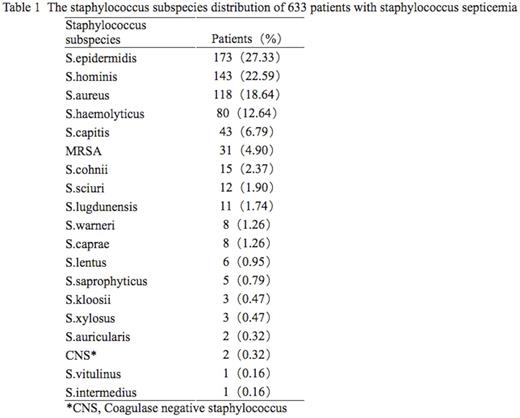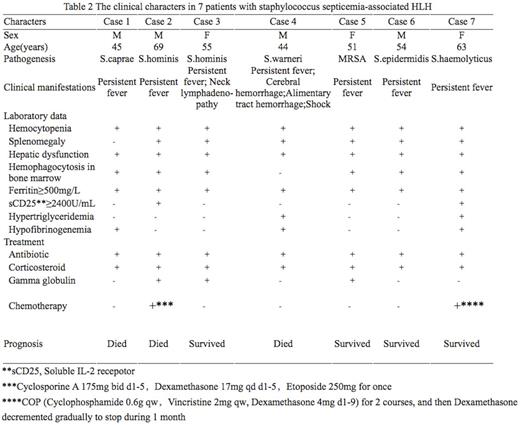Abstract
Abstract Objective: To analyze the epidemic characters, pathogenesis, clinical manifestations, laboratory data, therapeutic response, and prognosis in patients with staphylococcus septicemia-associated hemophagocytic lymphohistiocytosis(HLH). Methods A r
Objective To analyze the epidemic characters, pathogenesis, clinical manifestations, laboratory data, therapeutic response, and prognosis in patients with staphylococcus septicemia-associated hemophagocytic lymphohistiocytosis(HLH).
Methods: retrospective study was performed on 7 patients with staphylococcus septicemia-associated HLH who were admitted to The First Affiliated Hospital of Nanjing Medical University from January 2010 to December 2014.
Results Seven out of 633patients(1.11%) with staphylococcus septicemia were confirmed to have HLH. The incidence of HLH in staphylococcus subspecies were:S.caprae, 12.50%;S.warneri, 12.50%;Methicillin-resistant Staphylococcusaureus(MRSA), 3.23%;S.hominis, 1.40%;S.haemolyticus, 1.25%;S.epidermidis, 0.59%, respectively. The main clinical manifestations included persistentfever(100%) and splenomegaly(85.71%). The most prominent laboratory abnormalities werehemocytopenia, abnormal hepatic function, and elevated ferritin. Bone marrow aspirations were performed on 6 patients and all of them hadhemophagocytosis shown in bone marrow smears. Among 7 patients, 4 patientssurvived(57.14%) and 3 patients died(42.86%). All the 4 cured patients were treated with antibiotic plus corticosteroid. And 2 of them used gamma globulin, while one used the COP chemotherapy regimen. Treatment with antibiotic plus corticosteroid was effective in our study.
Conclusion Treatment with antibiotic plus corticosteroid was recommended for staphylococcus septicemia-associated HLH, and gamma globulin may also be useful in reducing the risk of death.
No relevant conflicts of interest to declare.
Author notes
Asterisk with author names denotes non-ASH members.



